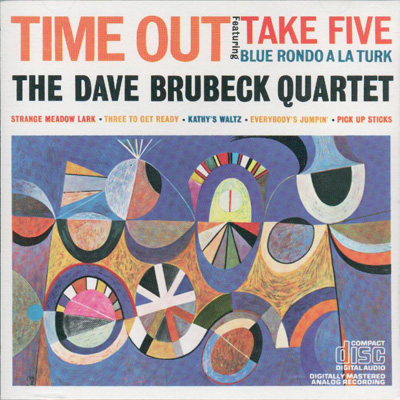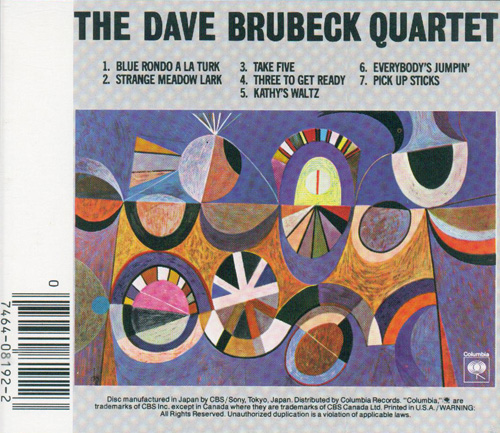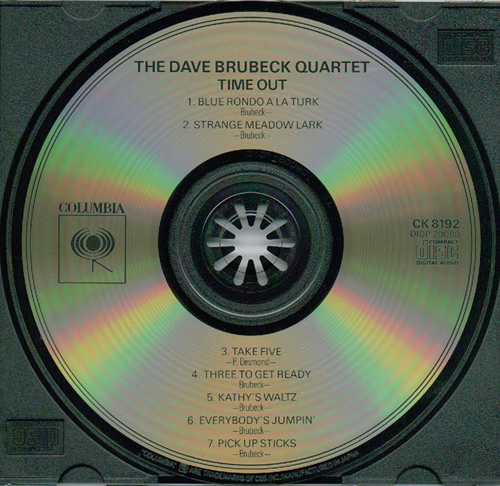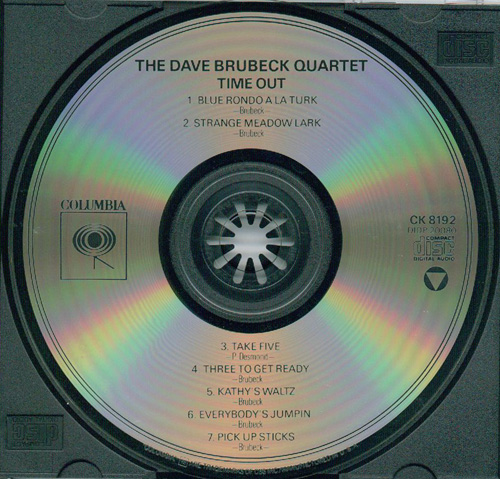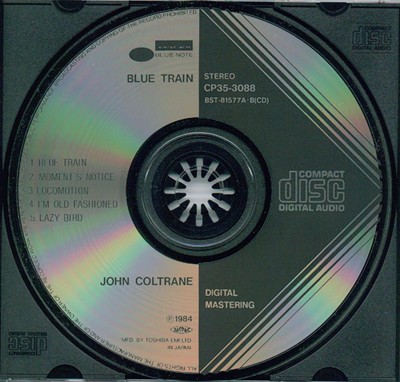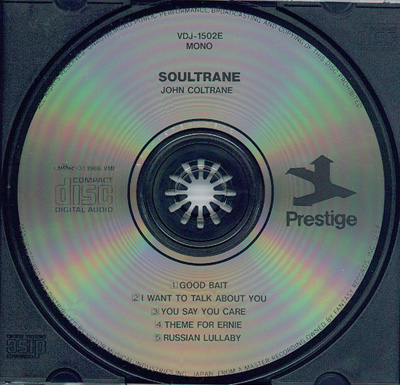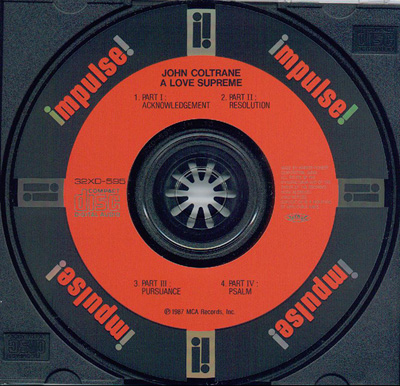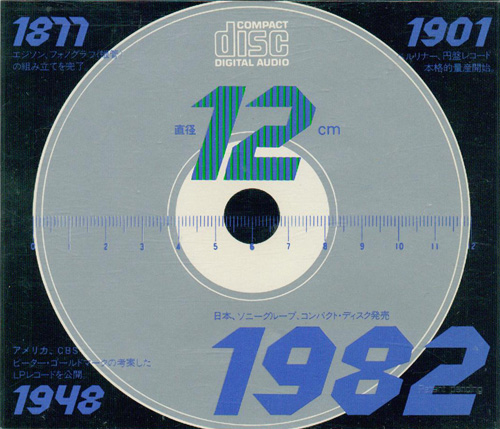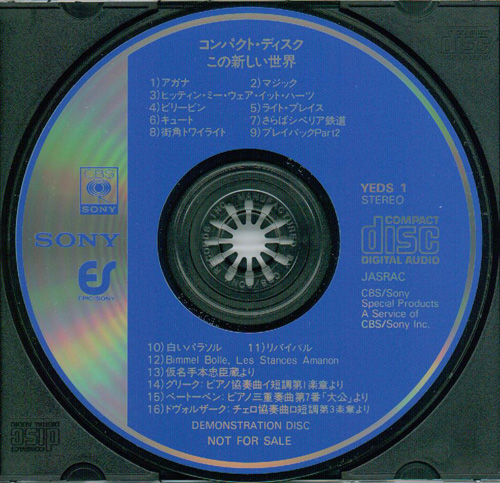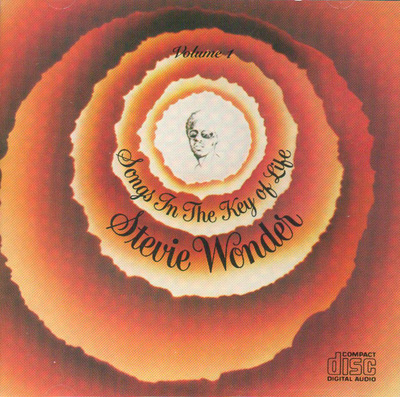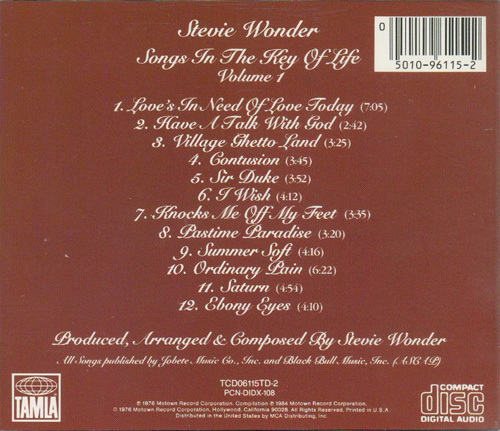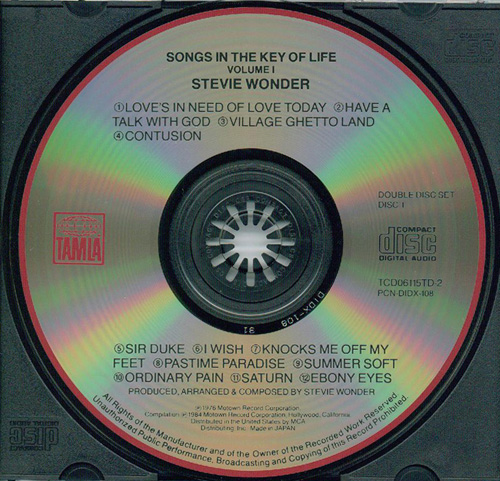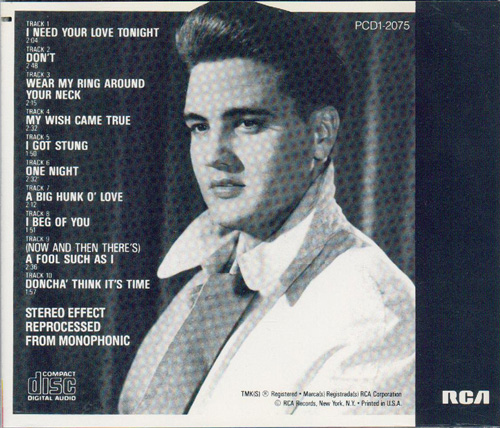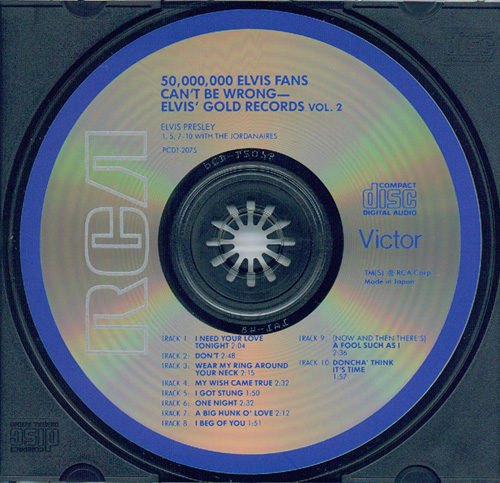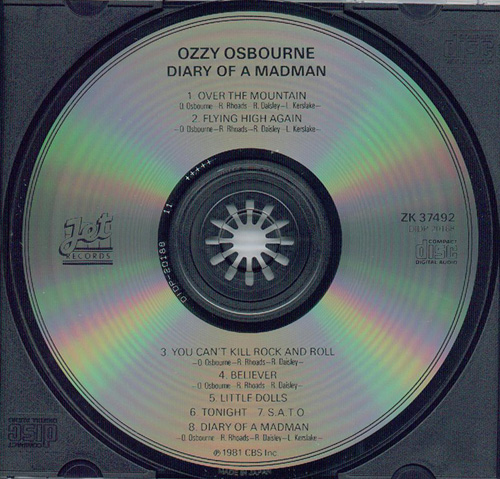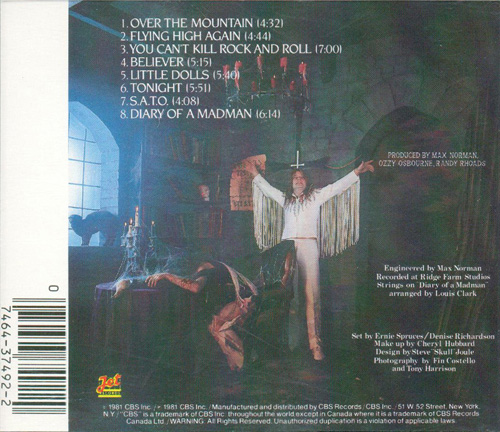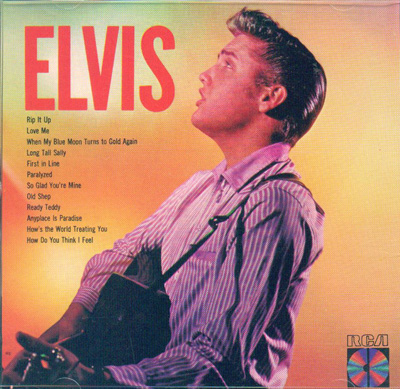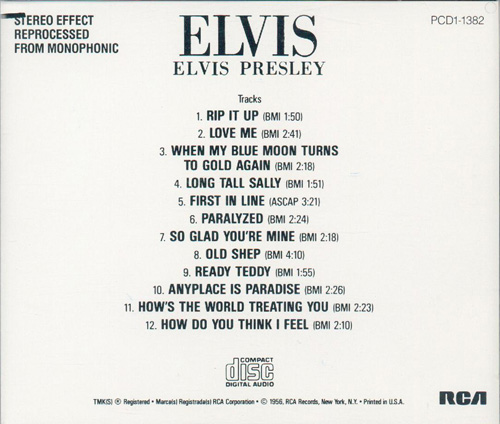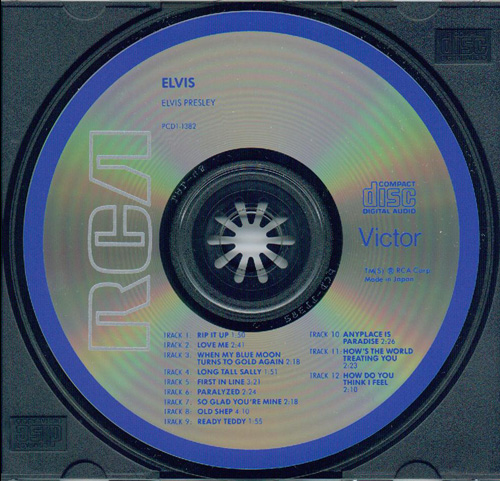Soma FREE CONSULTATION ~ Soma UPS COD Eat Your Paisley!">A rare early South Korean pressing of The Dead Milkmen http___www.bigleaguekickball.com_about_ Cheap Soma no prescription next day delivery Eat Your Paisley!
November 9th, 2010
This post is a departure from the typical entries here in two respects. First, it focuses on an alternative/punk/pop group formed in the 1980s. Second, it describes a CD, not pressed in Japan, West Germany, or the U.S., but in South Korea. Yes, South Korea. In 1986, the SKC plant in South Korea began pressing CDs using equipment provided by Philips-DuPont Optical (PDO) of Hanover, West Germany. These South Korean SKC pressings are quite rare in my experience. On to the CD.
Here we have the first U.S. issue of The Dead Milkmen’s 1986 sophomore effort, Eat Your Paisley!. The CD was released on the Restless label under catalog number 72131-2. It would appear as though this CD was also distributed in Europe since both the disc and inserts list 2131-2 as a European catalog number. The disc and inserts also reference the independent label Fever Records.
As stated, the disc was pressed at the SKC plant in South Korea. Since SKC received pressing equipment from PDO, the disc lacks a clear plastic ring at the center. Thus, it looks like a typical West German pressing. However, “Manufactured in South Korea” is printed on the disc at 4 o’clock. The matrix code is “72131-2 1128 104 01 *”. The middle set of characters in the matrix code, 1128 104, do not appear on West German pressings and appear to be a unique identifier of the SKC plant. The label side of the disc is dominated by an eye-opening shade of red.
The disc and inserts are dated 1986, and this particular copy was found in an early jewel case with smooth top and bottom edges. It is presumed that this issue is from 1986. Shown below are the Eat Your Paisley! cover, back insert, and CD.
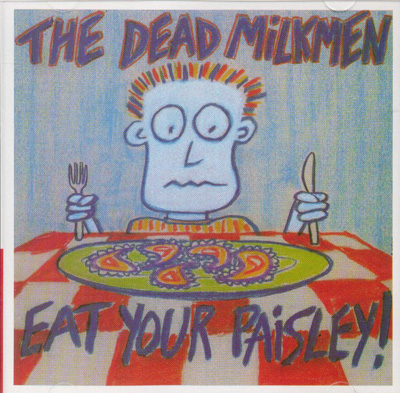
The cover for The Dead Milkmen’s 1986 album Eat Your Paisley!. This album was first released on CD in the U.S. on the Restless label under catalog number 72131-2.
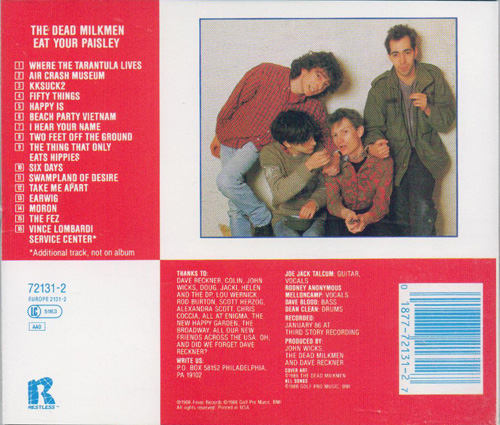
The back insert for the first U.S. CD issue of The Dead Milkmen Eat Your Paisley! (Restless, catalog number 72131-2). A European catalog number, 2131-2, is also listed. Note that this CD contains an extra track not provided on the original record, “Vince Lombardi Service Center”.
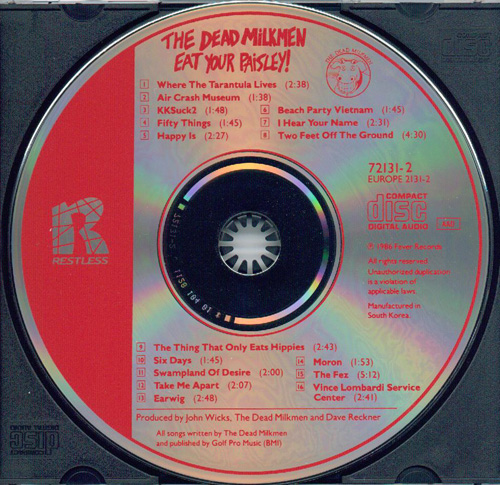
The original South Korean pressing of The Dead Milkmen Eat Your Paisley! (Restless, catalog number 72131-2). The disc lacks a clear plastic ring and, therefore, resembles an early West German pressing. Note that “Manufactured in South Korea” is printed at 4 o’clock. The matrix code is “72131-2 1128 104 01 *”. Note The Dead Milkmen logo at 1 o’clock.
